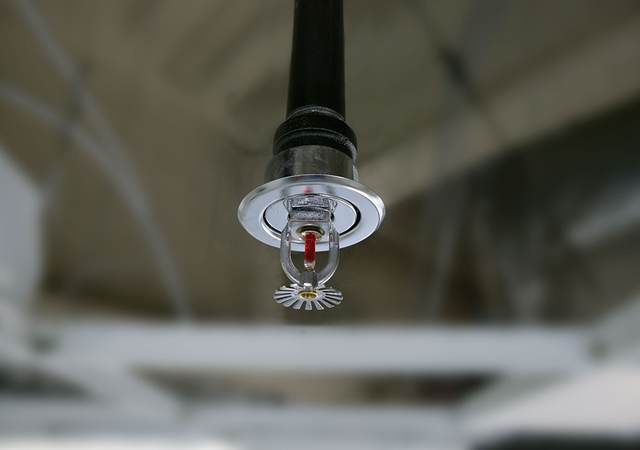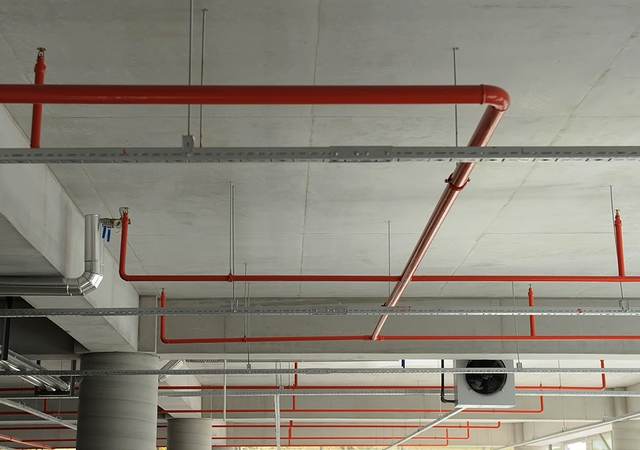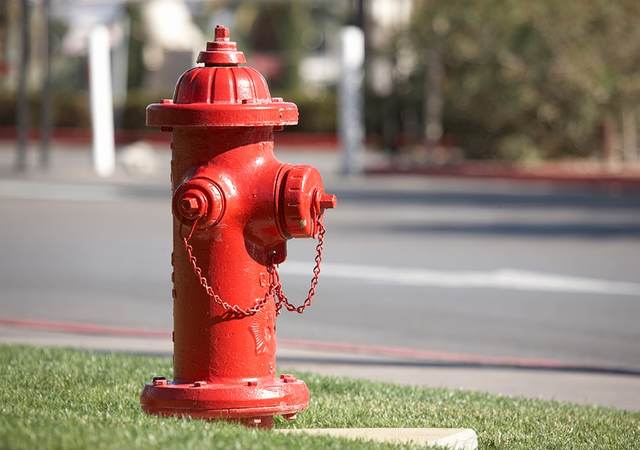November 2, 2021
By Sean DeCrane, industry relations manager, Built Environment
Distinguished Member of Technical Staff
UL has strong relationships with code officials, the fire service, insurance organizations and customers who rely on our testing expertise and knowledge. We leverage our collaborative relationships with stakeholders to solve cutting-edge challenges in the built environment. This case study describes one situation involving engaging broad stakeholders whose considerable efforts ultimately resolved a relevant fire protection challenge.
In 2020, UL performed a series of tests evaluating the extinguishing effectiveness of sprinkler system designs on a customer’s Top Loaded Automatic Retrieval and Fulfillment System (TL-ARFS). These are state-of-the-art storage and retrieval systems that use robots to maximize the efficiency of merchandise delivery. Storage bins capable of storing a wide variety of small goods are stacked vertically on storage racks in a large array to achieve this high efficiency. Each storage bin can carry up to 60 pounds. A similar type of TL-ARFS had experienced a fire recently in the U.K. that resulted in a total loss of the building. Insurance companies, building owners and manufacturers of these systems needed to have confidence that a fire associated with such systems could be managed appropriately by automatic fire suppression systems and firefighter response. A leading manufacturer of TL-ARFS approached UL looking for assistance in addressing this unique challenge.
A key decision factor for this system manufacturer was UL’s deep relationships with code officials, the fire service and the insurance industry. We were able to bring these stakeholders to the table with a team of UL technical experts and the UL Firefighter Safety Research Institute Advisory Board, which consists of fire service representatives worldwide. This coalition worked quickly to develop an exploratory program to provide the necessary insights and safety data for these systems.
The project involved three phases:
Phase 1 — Connect UL and the client with five fire service subject matter experts to learn more about the U.K. fire incident, previous fire tests evaluating sprinkler effectiveness in this client’s system and an in-depth description of how their TL-ARFS system operates.
Phase 2 — Construct a sample system at a UL test facility where subject matter experts could explore various post-fire (overhaul) disassembly and examination methods. This phase allowed for full-scale testing of different strategies to determine the safest and most efficient methods for post-fire operations in these complex storage systems. Insurance representatives were also involved with this phase.
Phase 3 — Conduct a live fire test with sprinkler protection and a fire service response involving 20 firefighters. The phase would test the theories of disassembly and examination determined in Phase 2.
Phases 2 and 3 of the project were very labor-intensive, involving hand and power tools and physically removing hundreds of individual storage bins. The goal of Phase 3 was to evaluate the effectiveness of the disassembly method developed by the subject matter experts. Assembling firefighters from different agencies created logistical challenges due to COVID-19 health and safety restrictions. In addition, UL engineers worked hard to help ensure that the participants on-site at the test facility could safely conduct the exercises while meeting project and customer goals. Participating firefighters were from fire departments whose jurisdiction included a client’s TL-ARFS.
The test began with ignition in the system, which progressed to fire sprinkler activation. The system manufacturer acted as the building owner and initiated a fire department response with the subject matter experts performing as fire service officers directing the firefighters. The test experiment and firefighter response exceeded everyone’s expectations in the effectiveness of the firefighters to access and penetrate the system to the point of fire origin and perform final extinguishment. UL’s final report will include many other lessons as well.
To date, UL has shared the project results with code officials, other first responders and academia from UL’s Fire Council. We will continue to incorporate feedback from stakeholders as we move forward with further engagement in the future. Our goal is to share learnings and best practices so fire responders can conduct safer and more efficient post-fire disassembly and examination of these systems.
This project exemplifies the unique technical expertise of UL Research Engineers and the Built Environment Team to leverage UL knowledge, experience, organization, facilities and broad relationships to bring solutions to an innovative new storage technology to solve critical fire safety challenges. A final report and video will be available in November 2021.
For further information or assistance, please contact UL’s Codes and Regulatory Services.
Get connected with our sales team
Thanks for your interest in our products and services. Let's collect some information so we can connect you with the right person.




